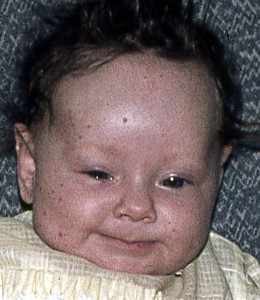We actually know what causes autism
 In a recent article on the Autism Vaccine Myth, I read a clear summary of what evidence to date has so far found about the causes of autism. And the result is that some of these causes are due to inherited and spontaneous mutations not previously seen in the parents or siblings, some of which do not manifest until early development.
In a recent article on the Autism Vaccine Myth, I read a clear summary of what evidence to date has so far found about the causes of autism. And the result is that some of these causes are due to inherited and spontaneous mutations not previously seen in the parents or siblings, some of which do not manifest until early development.
“DNA sequencing technology that have made it possible to compare the genomes of individuals with autism to those of individuals without autism, as well as to those of their parents. It is now evident that there are many genetic paths to autism, and that some mutations leading to autism are not inherited but arise spontaneously in reproductive cells or during development. These mutations help to explain how autism can appear in families that previously had no history of the condition. Some mutations associated with autism are single changes in the DNA code that make up genes. Other kinds of mutations include extra copies or deletions of larger stretches of chromosomes that include multiple genes.
When investigators have homed in on specific genes, they have identified numerous candidates, many of them associated with the formation or function of the brain. These include genes that play roles in neural development and structuring, nerve signaling, and speech and language processing. The emerging scientific picture of autism is a condition that begins during fetal development, as a result of both genetic and environmental influences.”
Among these genetic causes would include genes like the collagen disorder of Ehlers Danlos Syndrome (EDS) because collagen builds brain connectivity (brain connectivity has implications for information processing, information overload and meltdowns), regulates the immune system and is important in autonomic functioning (such as blood pressure, plummets in which can trigger tachycardia episodes that register as panic attacks) and muscle function, including muscle fatiguability and its role in respiratory and abdominal muscles essential to consistent oxygen ventilation (with hypotonia common in two forms of EDS with 50% of those with hypotonia eventually requiring mechanical ventilation at some point between age 3-55).
These genes would include the one for IgA deficiency which results in poor enzyme production, high inflammatory state, higher incidence of food allergies and food intolerances, poor immunity of all mucus membranes including the gut, poor signalling of white cells and clean up processes, higher incidence of recurrent respiratory tract infections leading to recurrent antibiotics, higher incidence of IgA related celiac and associated celiac neuropathy, higher incidence of progressing to IgG subclass deficiencies with their own associated complications including cancer issues.
Environmentally and genetically this would include neuronal migration issues and DNA damage that come as standard in Fetal Alcohol Spectrum Disorder(FASD), 80% of such children now being diagnosed as being on the autism spectrum. Other causes of DNA damage include some significant early viral infections.
Gene anomalies also occur at higher rates in first cousin and double cousin marriages so this two could be part of some people’s autism picture.
yeah… go figure
Donna Williams, BA Hons, Dip Ed.
Author, artist,and presenter.
http://www.donnawilliams.net
I acknowledge Aboriginal and Torres Strait Islander people as the Traditional Owners of this country throughout Australia, and their connection to land and community.
